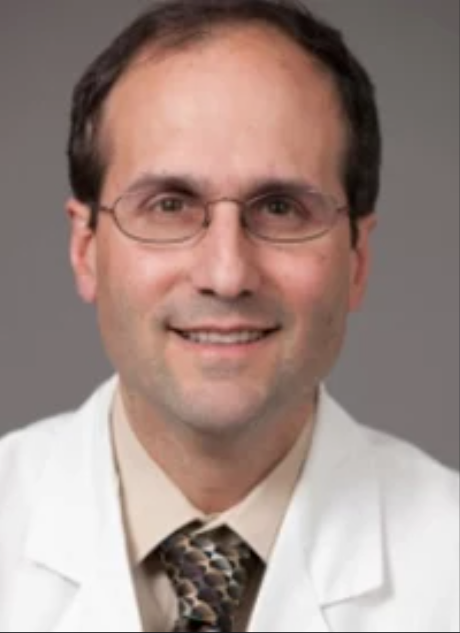COVID-19 and Cancer Care: Lessons Learned 1 Year Later
From delayed diagnoses, to the emergence of telemedicine, to managing the increased emotional burden experienced by patients and healthcare professionals alike, the community has been forced to approach cancer care in ways they never had before in light of the COVID-19 pandemic.
Nisha Mohindra, MD

It has been more than 1 year since the COVID-19 pandemic began, and its impact on the oncology field has been felt globally. From delayed diagnoses, to the emergence of telemedicine, to managing the increased emotional burden experienced by patients and healthcare professionals alike, the community has been forced to approach cancer care in ways they never had before.
In various interviews with OncLive®, healthcare providers described the impact the pandemic has had on treatment and quality of life (QoL) of patients, and how the rollout of the vaccine has gone thus far.
Impact on Cancer Care
In the next several years, the impact of the pandemic will be felt in the oncology field specifically due to the decreased rates of screening, and consequently diagnoses, according to Lewis Au, MBBS, BMedSci, FRACP, an oncology research fellow and visiting scientist at the The Royal Marsden NHS Foundation Trust and Cancer Dynamics Laboratory, Francis Crick Institute.
“We need to consider what services will need to be permanently implemented in the case of future peaks or other infectious disease scenarios,” Au said. “Additionally, treatment schedules and regimens are being altered because we didn’t have a good way to risk stratify patients according to their cancer type or treatment context.”
The framework that oncologists must work toward includes being able to tailor the risks that each patient has in terms of infection, or serious COVID-19 outcomes, Au added. “As far as how that period of delayed treatment, or redefined treatment, has impacted their overall outcomes in terms of survival or disease control, I don’t believe we have a way to measure that just yet,” Au continued. “However, it is a point of concern. With decreased cancer diagnoses, and altered treatment [approaches], long-term outcomes for patients [with cancer have been impacted] as a whole.”
The pandemic has challenged standard approaches to cancer care, according to Nisha Mohindra, MD, an assistant professor of medicine in the Hematology/Oncology Division at the Northwestern University Feinberg School of Medicine. “Certainly, I believe it’s taught us more about the nuances of decision making with patients and how to consider [factors] beyond what we typically consider. [The pandemic has] changed the conversation in a way,” Mohindra said. “It has shifted the focus from just thinking about treatment to considering safety as well, and how to balance that while still prioritizing cancer care. It has been a challenging time, but I hope we walk away having learned something that we may not have without these pressures.”
For Michael A. Morse, MD, a professor of medicine of Duke University School of Medicine, the pandemic has forced him to consider different methods in all aspects of clinical practice. “What I have noticed the most is a willingness to say ‘Why not?’ to many ideas and processes that previously were thought to be unacceptable—some as simple as electronic signatures where ‘wet ink’ signatures were previously required, or virtual consent for studies rather than in-person consent,” Morse said. “[Patients can now receive] certain injections at home where previously a visit to the infusion center was required. E-consults [can be used] for focused medical questions rather than a required patient visit with the consultant.”
Michael A. Morse

One area fraught with challenges due to COVID-19 was clinical research, according to Edward B. Garon, MD, director of Thoracic Oncology at the Jonsson Comprehensive Cancer Center at University of California, Los Angeles. “Some common-sense modifications needed to be made [with regard to research], although I do not believe that these [changes] led to a decrease in what we will learn from these trials,” Garon said. “One hope is that some unhelpful constraints of trials that increase inconvenience to patients and limit the number of practices that can offer clinical research [opportunities], and were abandoned during the pandemic, could potentially inform future trials.”
Edward B. Garon, MD

Moreover, travel restrictions greatly impacted clinical research, according to Tian Zhang, MD, an assistant professor of medicine at Duke Cancer Institute, who also emphasized the importance of the National Clinical Trials Network. “There are community oncology centers that are opening up these trials, and their involvement is crucial,” Zhang noted.
Tian Zhang, MD

Leveraging Technology
One of the biggest difficulties faced by healthcare providers during the pandemic was safe access to patients, according to Robert J. Motzer, MD, a professor of medicine at Weill Medical College of Cornell University.
Robert J. Motzer, MD

“I have a large practice of patients with renal cell carcinoma, and it has been a challenge to maintain that practice through the pandemic,” Motzer said. “[The virus has] also made it more difficult for patients to come in for treatment, or follow-up visits.”
One of the solutions to this problem has been the implementation of telemedicine, with the use of video appointments, according to Morse. “We are utilizing telehealth more, which has increased accessibility to patients and has increased the speed with which we can resolve their concerns because calls can be scheduled at more convenient times or even at a moment’s notice.”
However, while video appointments have become more common in practice, they are not always ideal for every situation, Motzer cautioned. “If a patient is experiencing difficulties or symptoms, a one-on-one visit is certainly preferential.”
“While it is not optimal for all patient situations, it is very helpful for those who live a distance away, have good bandwidth, and for whom a physical examination is less helpful,” Jared Weiss, MD, an associate professor of medicine, Division of Oncology, Department of Medicine, University of North Caroline (UNC) School of Medicine, associate director of finance, UNC Lineberger Clinical Protocol Office, UNC Lineberger Comprehensive Cancer Center, added. “In particular, it's good for 2nd opinions and for targeted therapy patients.”
Jared Weiss, MD

Maintaining Patient QoL
In the COVID-19 era, finding ways to communicate with patients was not only important for treatment, but for providers to be able to support patients, according to Cristiane Decat Bergerot, PhD, MS, BS, of the Department of Medical Oncology & Experimental Therapeutics at City of Hope. “The pandemic is really impacting the way we provide our patients with support, and also the ways in which we give treatment,” Bergerot said.“It has been a challenge to meet the needs of our patients, as well as to mitigate their emotional burden.”
Cristiane Decat Bergerot, PhD, MS, BS

Eleni Efstathiou, MD, an associate professor of Genitourinary Medical Oncology at The University of Texas MD Anderson Cancer Center, noted that the pandemic has had a significant impact on her patients, many of whom are older and unable to see their families.
“I know, especially for my patients who are older men with prostate cancer, that this time matters,” Efstathiou said. “This year that they haven’t been able to enjoy time with their family, grandchildren, or loved ones, is one of the most devastating blows to their health. Obviously, everyone is going through hardship, but I’m concerned about the people who have more limited time.”
In terms of treatment-related QoL, Michael Davies, MD, noted that the types of therapy used in patients can make all the difference—especially in the midst of an infectious disease pandemic. In particular, Davies, who is a professor and the chairman of the Department of Melanoma Medical Oncology at The University of Texas MD Anderson Cancer Center, noted the shift away from chemotherapy for patients with melanoma toward targeted and immunotherapies.
“We certainly know that patients with cancer seem to have an increased risk of serious infection that appears to be most strongly associated with those who have hematologic malignancies or those receiving cytotoxic chemotherapy,” Davies said. “I think we've been spared a lot of that concern [with regard to our patients with melanoma]. We felt very comfortable giving both targeted therapy and immunotherapy, even in the current setting that we're in.”
The Promise of Vaccines
In January 2021, the National Comprehensive Cancer Network (NCCN) released guidance that all patients with active cancer, or with active, recent, or planned cancer treatment, should be considered the highest priority to receive 1 of the COVID-19 vaccines that have been granted emergency use authorization from the FDA.1
The top recommendations include:
- Patients with cancer should be prioritized for vaccination, as they are CDC priority group 1b or 1c, and they should be immunized once the vaccine is available.
- Immunization is recommended for all patients on active therapy, with the understanding that limited safety and efficacy data are available.
- Reasons for delay of vaccines in this population are comparable to the general public, such as recent exposure to the virus, as well as other cancer-specific factors. Immunization should be delayed for at least 3 months after hematopoietic cell transplantation (HCT) or engineered cellular therapy, such as CAR-T cell therapy, to maximize the effectiveness of the vaccine.
- All caregivers and household contacts of patients with cancer should also be vaccinated when the option is available to them.
In the event of limited vaccine supply, patients with active cancer on treatment, including those on hematopoietic and cellular therapy; those planning to begin treatment; and those who received treatment less than 6 months ago, should be among the first to be immunized.
The NCCN guidance also recommends that cancer-care providers consider additional risk factors in patients that could put them at higher risk for COVID-19 infection, such as advanced age, namely those 65 years and older; other comorbidities, such as chronic pulmonary, cardiovascular or renal disease; as well as social and demographic factors, including poverty, limited access to healthcare, and underrepresented minorities.
At The University of Texas MD Anderson Cancer Center, a centralized approach to vaccinating patients has been adopted, in which patients are notified when they are able to sign up for and receive their vaccine, according to Patrick Pilié, MD, an assistant professor in the Department of Genitourinary Medical Oncology of the Division of Cancer Medicine at The University of Texas MD Anderson Cancer Center. “I believe that’s a great approach, instead of having each individual clinic or physician trying to figure out which patients can get [the vaccine] and when.”
However, one of the big questions that has been raised by patients regarding the vaccine is whether they should receive it, according to Pilié. “I’ve heard many questions from patients pertaining to whether it is safe for them to receive it. Obviously, that’s a patient-by-patient scenario, but in general, most should get the vaccine. We strongly encourage our patients to get the COVID-19 vaccination wherever is quickest and most convenient for them to do so.”
Some providers, such as Bergerot, said patients were afraid because of the abundance of information, and do not know what would be best for their specific conditions. For Mohindra, the subject of whether to receive the vaccine has been well discussed. “I’ve certainly been weighing the pros and cons with my patients,” Mohindra said. “These vaccines weren’t tested in this particular patient population, but overall, thinking about how to protect them from the virus is of the utmost importance in my conversations with them.”
In February 2021, 130 organizations, cancer centers, and other institutions sent a letter to President Joe Biden and his administration, as well as other leading public health officials at state health departments to underscore the need to provide patients with cancer and survivors of cancer with priority access to a COVID-19 vaccine.2 Patients with cancer are at high risk of severe illness and death from COVID-19, and due to the need for frequent in-person care while receiving treatment, they could be at increased risk for exposure to the virus, as well.2 Additionally, survivors of cancer have a higher probability of infection and death from the virus compared with the general population.3
“The bottom line is, we need to do better across the board in terms of delays, so that these patients and their families can be back together,” Efstathiou said. “In a way, they’re more impacted than most of us because they’re dealing with a disease that, in some cases, may give them limited time.”
References
- NCCN shares new guidance principles for vaccinating people with cancer against COVID-19. News release. National Comprehensive Cancer Network. January 22, 2021. Accessed March 29, 2021. https://bit.ly/3cyaxxH
- 130 organizations, cancer centers, and other institutions send letter to Biden urging priority access to a COVID-19 vaccine for cancer patients and survivors. February 17, 2021. Accessed March 29, 2021. https://bit.ly/3ujqHTV
- Letter to President Biden and leaders of state public heath departments: prioritizing COVID-19 vaccines for patients with cancer and survivors of cancer. American Association for Cancer Research. February 17, 2021. Accessed March 29, 2021. https://bit.ly/3bkobDY



